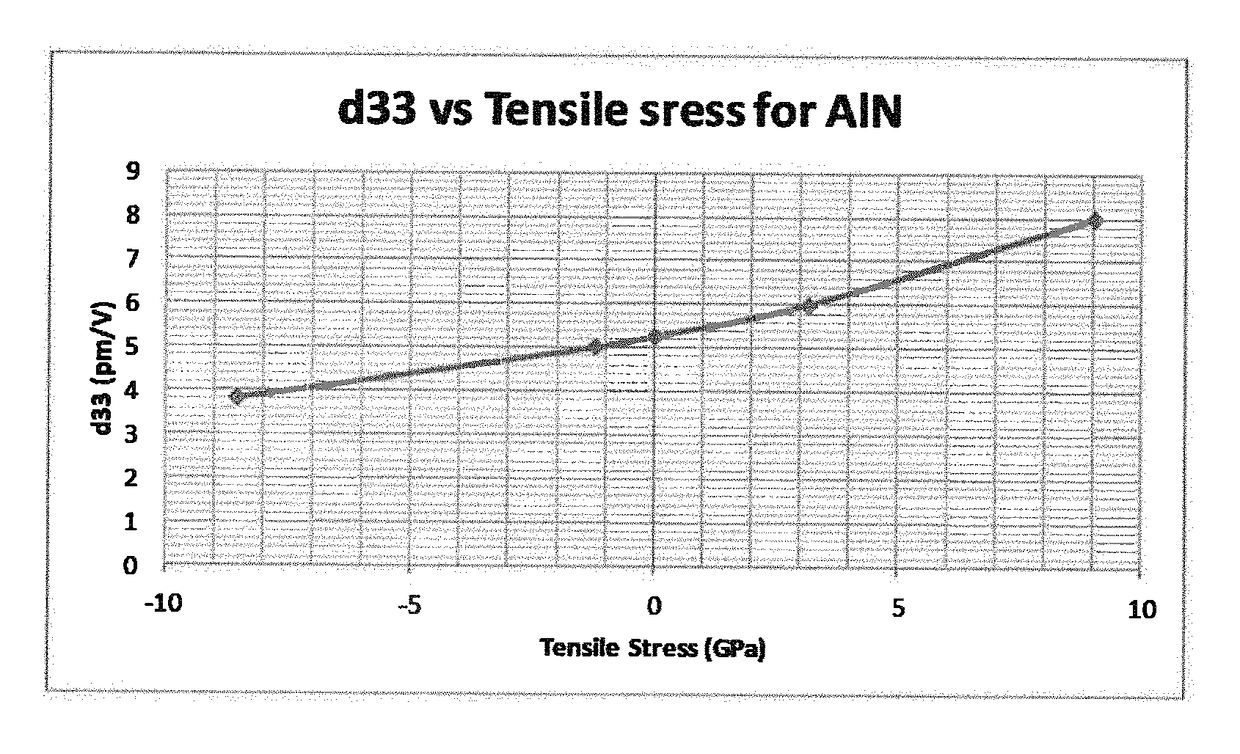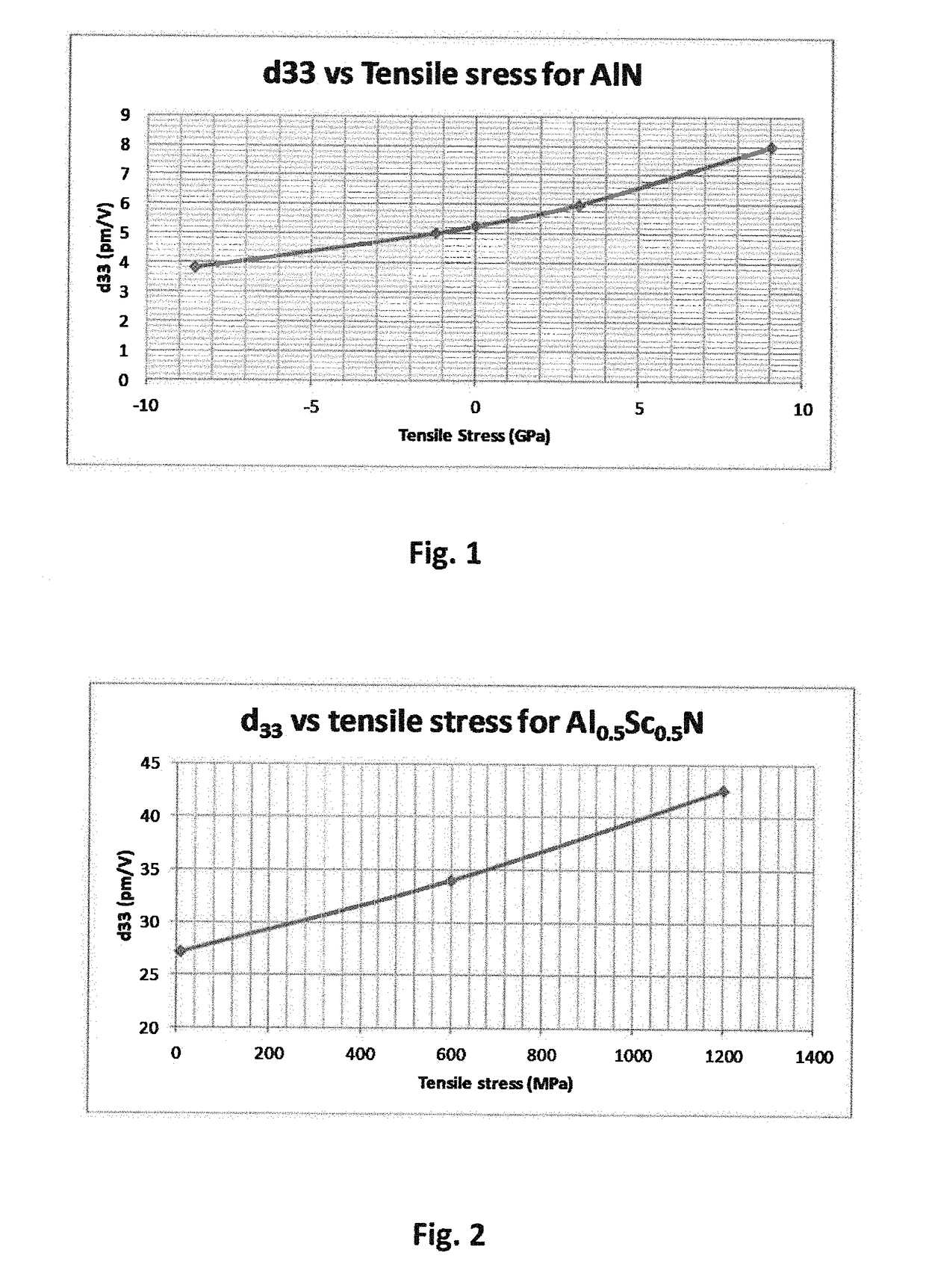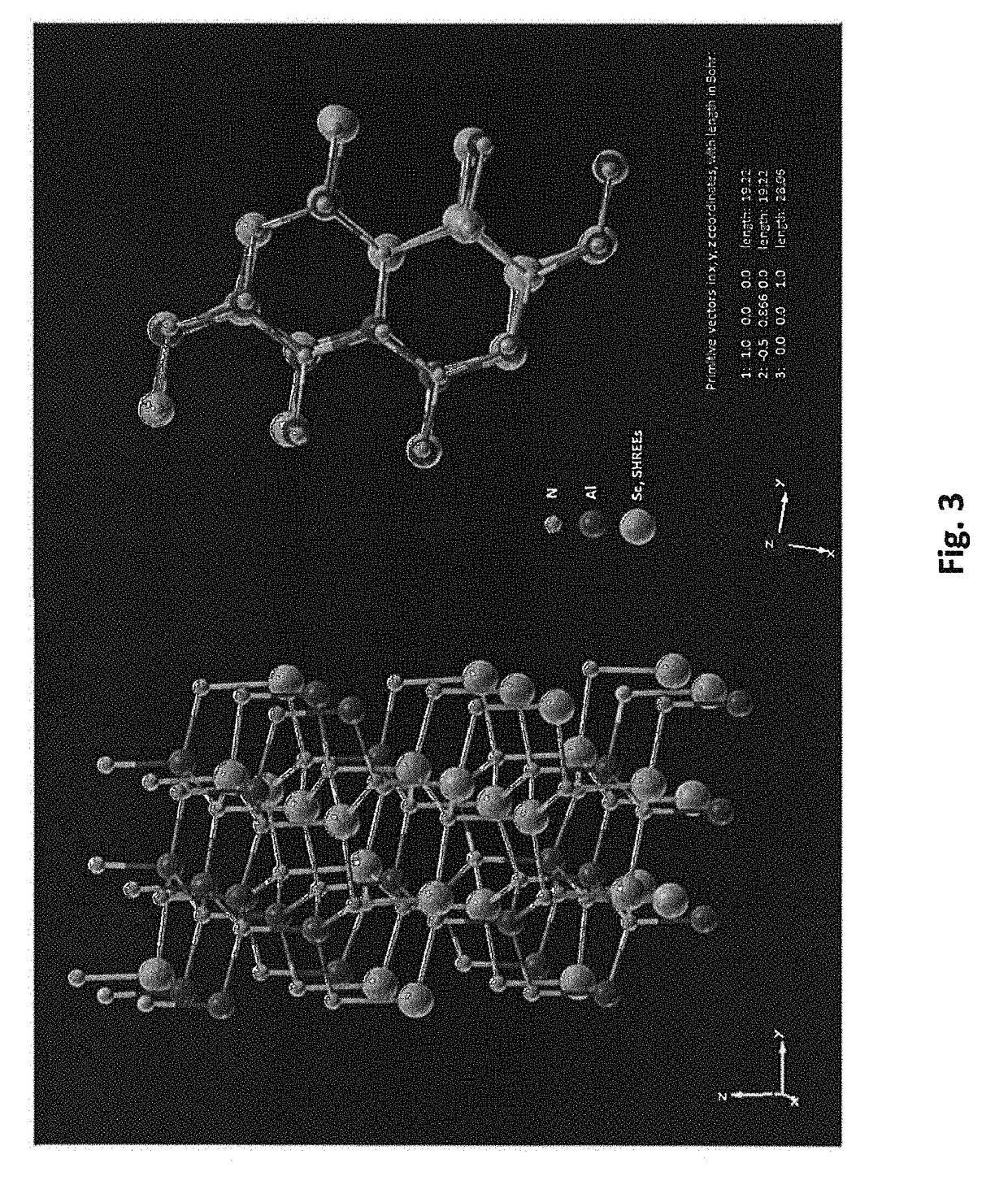Piezoelectric Alloy Films
a technology of alloy films and piezoelectric devices, applied in the field of piezoele, can solve the problems of low piezoelectric coefficient, low piezoelectric coefficient, and low piezoelectric coefficient, and achieve the effects of low electronegativity, low atomic radius, and similar chemical properties
- Summary
- Abstract
- Description
- Claims
- Application Information
AI Technical Summary
Benefits of technology
Problems solved by technology
Method used
Image
Examples
Embodiment Construction
[0027]Embodiments of the invention provide new aluminum nitride (AlN) based thin film alloys incorporating the selected heavy rare earth elements (SHREEs), namely ytterbium gadolinium, dysprosium, holmium, thulium, terbium, and lutetium, that have higher piezoelectric do coefficients than pure aluminum nitride. This improvement can be enhanced by applying a tensile stress of preferably at least 200 MPa and more preferably in the order of 1.0 GPa on the thin film. The results of DFT simulations show that these alloys present piezoelectric d33 coefficients of up to 18 pm / V more than three times the piezoelectric coefficient of aluminum nitride with no tensile stress applied. In addition, DFT simulations show that the addition of tensile stress on the thin film can potentially increase by 70% the piezoelectric coefficients of the alloys.
[0028]The DFT simulation is started by finding a proper special quasi random structure to represent an alloy and generating 4f electron in core pseudop...
PUM
| Property | Measurement | Unit |
|---|---|---|
| thickness | aaaaa | aaaaa |
| intrinsic tensile stress | aaaaa | aaaaa |
| intrinsic tensile stress | aaaaa | aaaaa |
Abstract
Description
Claims
Application Information
 Login to View More
Login to View More - R&D
- Intellectual Property
- Life Sciences
- Materials
- Tech Scout
- Unparalleled Data Quality
- Higher Quality Content
- 60% Fewer Hallucinations
Browse by: Latest US Patents, China's latest patents, Technical Efficacy Thesaurus, Application Domain, Technology Topic, Popular Technical Reports.
© 2025 PatSnap. All rights reserved.Legal|Privacy policy|Modern Slavery Act Transparency Statement|Sitemap|About US| Contact US: help@patsnap.com



